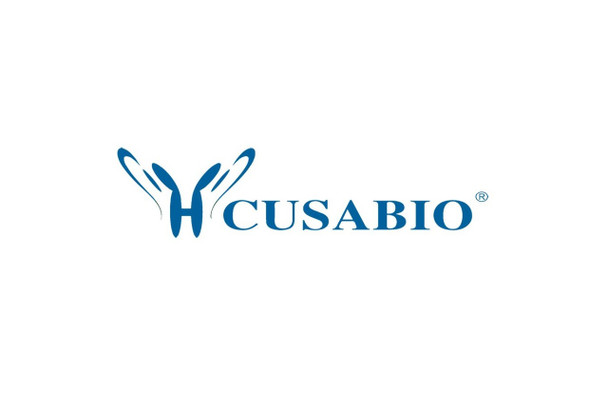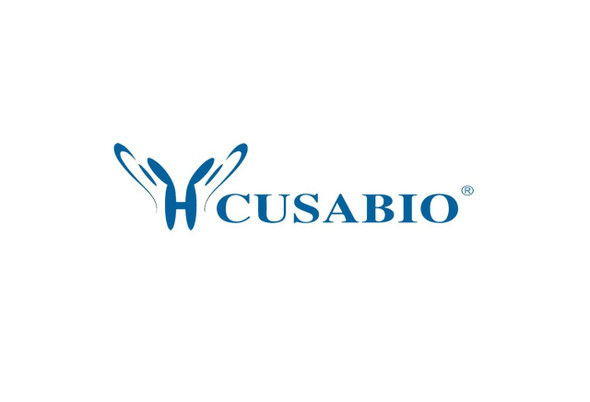Cusabio Human Recombinants
Recombinant Human Origin recognition complex subunit 6 (ORC6) | CSB-EP893418HU
- SKU:
- CSB-EP893418HU
- Availability:
- 13 - 23 Working Days
Description
Recombinant Human Origin recognition complex subunit 6 (ORC6) | CSB-EP893418HU | Cusabio
Alternative Name(s): ORC 6; Orc6; ORC6_HUMAN; ORC6L; Origin recognition complex subunit 6; origin recognition complex subunit 6 homolog like; origin recognition complex subunit 6 homolog like (yeast); origin recognition complex subunit 6 like (yeast)
Gene Names: ORC6
Research Areas: Epigenetics and Nuclear Signaling
Organism: Homo sapiens (Human)
AA Sequence: MGSELIGRLAPRLGLAEPDMLRKAEEYLRLSRVKCVGLSARTTETSSAVMCLDLAASWMKCPLDRAYLIKLSGLNKETYQSCLKSFECLLGLNSNIGIRDLAVQFSCIEAVNMASKILKSYESSLPQTQQVDLDLSRPLFTSAALLSACKILKLKVDKNKMVATSGVKKAIFDRLCKQLEKIGQQVDREPGDVATPPRKRKKIVVEAPAKEMEKVEEMPHKPQKDEDLTQDYEEWKRKILENAASAQKATAE
Source: E.coli
Tag Info: N-terminal GST-tagged
Expression Region: 1-252aa
Sequence Info: Full Length
MW: 55.1 kDa
Purity: Greater than 90% as determined by SDS-PAGE.
Relevance: Component of the origin recognition complex (ORC) that binds origins of replication. DNA-binding is ATP-dependent. The specific DNA sequences that define origins of replication have not been identified yet. ORC is required to assemble the pre-replication complex necessary to initiate DNA replication. Does not bind histone H3 and H4 trimethylation marks H3K9me3, H3K27me3 and H4K20me3.
Reference: "Global, in vivo, and site-specific phosphorylation dynamics in signaling networks." Olsen J.V., Blagoev B., Gnad F., Macek B., Kumar C., Mortensen P., Mann M. Cell 127:635-648(2006)
Storage: The shelf life is related to many factors, storage state, buffer ingredients, storage temperature and the stability of the protein itself. Generally, the shelf life of liquid form is 6 months at -20?/-80?. The shelf life of lyophilized form is 12 months at -20?/-80?.
Notes: Repeated freezing and thawing is not recommended. Store working aliquots at 4? for up to one week.
Function: Component of the origin recognition complex (ORC) that binds origins of replication. DNA-binding is ATP-dependent. The specific DNA sequences that define origins of replication have not been identified yet. ORC is required to assemble the pre-replication complex necessary to initiate DNA replication. Does not bind histone H3 and H4 trimethylation marks H3K9me3, H3K27me3 and H4K20me3.
Involvement in disease: Meier-Gorlin syndrome 3 (MGORS3)
Subcellular Location: Nucleus
Protein Families: ORC6 family
Tissue Specificity:
Paythway: Cellcycle
Form: Liquid or Lyophilized powder
Buffer: If the delivery form is liquid, the default storage buffer is Tris/PBS-based buffer, 5%-50% glycerol. If the delivery form is lyophilized powder, the buffer before lyophilization is Tris/PBS-based buffer, 6% Trehalose, pH 8.0.
Reconstitution: We recommend that this vial be briefly centrifuged prior to opening to bring the contents to the bottom. Please reconstitute protein in deionized sterile water to a concentration of 0.1-1.0 mg/mL.We recommend to add 5-50% of glycerol (final concentration) and aliquot for long-term storage at -20?/-80?. Our default final concentration of glycerol is 50%. Customers could use it as reference.
Uniprot ID: Q9Y5N6
HGNC Database Link: HGNC
UniGene Database Link: UniGene
KEGG Database Link: KEGG
STRING Database Link: STRING
OMIM Database Link: OMIM









